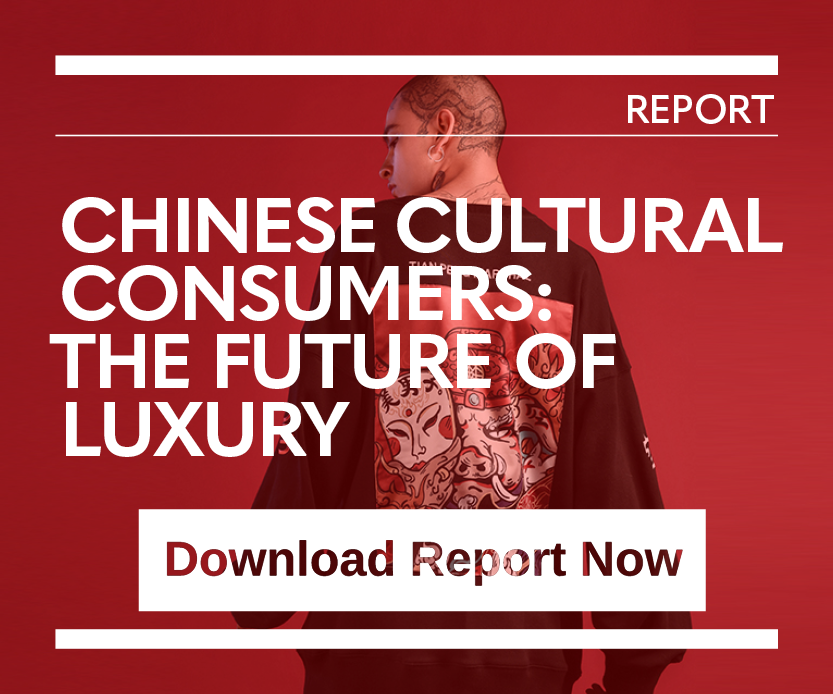Running now through May 28, the Macau Fashion Gallery (MFG) is hosting a new exhibition, “Beyond the Boundaries: Boundary between Virtual and Reality – Greater Bay Area Fashion.” Not to be confused with the San Francisco Bay Area of the U.S., the exhibition is all about promoting China’s Greater Bay Area (GBA) — which comprises the two Special Administrative Regions of Hong Kong and Macau, and the nine municipalities of Guangzhou, Shenzhen, Zhuhai, Foshan, Huizhou, Dongguan, Zhongshan, Jiangmen and Zhaoqing in Guangdong Province.
Centering around a phygital fashion show that features virtual showcasing, 3D-printed clothing, and augmented reality (AR) viewing experiences, the exhibition is supported by the Guangdong Association of Garment and Garment Article Industry, the Guangdong Fashion Designers Association, and the Hong Kong Fashion Farm Foundation.
Four fashion teams from Macau, Shenzhen, Guangzhou, and Hong Kong will attend the digital show. Some of the participants, such as Macau’s Fiona Sam and Hong Kong’s Jason Lee, have either already established their own fashion labels or are currently working at fashion design studios.
This will not be the first embrace of Web3 by Macau’s fashion sector. In October 2022, the Macau Fashion Show featured a virtual show for the first time, co-hosted by Macau digital fashion brand 404absent, which was co-founded by the aforementioned Fiona Sam and sells items as NFTs, and MaConsef, the fashion incubator of the Macau Productivity and Technology Transfer Center (CPTTM).
MaConsef’s mission is to promote Macau’s culture in the fashion sector, and introducing local fashion brands into the metaverse obviously supports the objective. Perhaps aiming to maintain the momentum of digital fashion, MFG — with the support of CPTTM and Macau’s Cultural Affairs Bureau — kicked off the submission process for the exhibition one month later.
For the GBA’s fashion sector, the new exhibition provides a valuable opportunity to pool emerging fashion talent into a cohesive force to be reckoned with in the metaverse, just as Hong Kong pushes to become a Web3 hub. As the central government in Beijing seeks to tightly coordinate the development of Hong Kong, Macau, Guangzhou, and Shenzhen, the fashion sector from each area can complement one another.
For instance, Guangdong province has long been a major apparel manufacturing center in China, but in recent years its local fashion brands have not been as competitive as those from Hangzhou or Fujian. However, the GBA possesses immense resources that its fashion sector can tap into, with its four major cities each having unique cultural flavor.
Additionally, metaverse-based technologies such as AR can greatly promote fashion items that draw on this cultural expertise. Combined with Guangdong’s manufacturing prowess, the GBA can build towards its aspirations of becoming a major global fashion hub.
For Macau, hosting the phygital exhibition can assist the revival of its tourism- and casino-dependent economy, which has been severely impacted by COVID lockdowns over the past three years. International labels bemoaned the loss of their Macau stores during the pandemic, and the exhibition will help boost the global fashion sector’s confidence in the city.
Macau is also aiming to diversify its economy. Recently, six hospitality and gambling giants, including MGM China and SJM Holdings, have made an almost $15 billion pledge to develop the city’s non-gambling sectors, such as entertainment, theme parks, trade conventions, and exhibition venues, over the next 10 years. As such, design, fashion, and culture-related exhibitions like “Beyond the Boundaries” fit neatly into the city’s long-term diversification plans.
Lastly, the exhibition fits well with the GBA’s broader metaverse ambitions. As major cities in China vie to create their local metaverse industries to accelerate digitization, Guangzhou has sought to leverage its geographical advantages to create a specific GBA metaverse. Digital art and design play a significant role in this process: in 2022, Guangzhou announced multiple noteworthy metaverse art projects, such as launching the first Bay Area Metaverse Digital Art Festival and setting up the Bay Area Metaverse Digital Art Research and Innovation Base. Macau’s culturally rich metaverse fashion exhibitions complement Guangzhou’s efforts.
Moreover, metaverse fashion shows are picking up steam in mainland China. In October 2022, the first China Metaverse Fashion Design Competition was held in Wuhan and unveiled the supercomputer “Calculating Cubic,” developed by local tech company Zettakit. The supercomputer created a metaverse space in which digital humans wore virtual outfits designed by the contestants.
Yet arguably more important than the competition itself is the potentially revolutionary impact that “Calculating Cubic” claims to bring to the fashion industry: it can significantly reduce the time and material cost in fashion design, making the process more efficient and sustainable. Exhibitions such as “Beyond the Boundaries” will help the GBA take advantage of similar technologies and not fall behind in the race.
While the “Beyond the Boundaries” exhibition won’t make Macau a fashion center overnight, similar phygital shows will certainly be held in the future. The Chinaverse should be on the lookout for the rise of fashion talents from the GBA.




